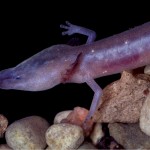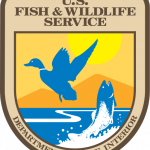Saving the Salamanders: Conservation vs. Development
Two Texas politicians have introduced legislation to block several species of salamanders in Central Texas from being recognized as endangered or threatened species.
The U.S. Fish and Wildlife Service (FWS) identified several salamanders (the Austin Blind, Georgetown, Jollyville Plateau and Salado Springs) as candidates to be listed as endangered or threatened species. Some of the species have been listed as candidates for over a decade. (A separate proposal to add the Dunes Sagebrush Lizard in West Texas and New Mexico to the endangered species list was avoided las month after a conservation plan by drillers and ranchers was accepted by Fish and Wildlife.)
U.S. Senator John Cornyn (R-TX) and U.S. Representative John Carter (R-TX) say classifying the amphibians as endangered could hinder area job growth and economic development. “My goal is to make sure the salamanders and people can peacefully co-exist,” Cornyn says. “And we can take care of the concerns about these species but also at the same time not stop the economic growth and job creation that comes along with the boom we are seeing here in Texas and in this part of the state, which has made us the envy of the rest of the country, if not the world.”
A similar creature, the Barton Springs Salamander, is currently listed as endangered. Because of this, the city of Austin must follow a Habitat Conservation Plan approved by the FWS for its management of the salamander’s habitat. Aptly named, the Barton Springs Salamander lives only in Barton Springs Pool and the area immediately around it.
The permits issued to protect that salamander went into effect in 1998. They expire in fall 2013. Because the process of editing and renewing the permit is extensive and time-consuming, the city started drafting a new conservation plan in hopes of receiving an updated permit before the current plan expires.
And in the new plan, the city wants to include at least one of salamanders Cornyn and Carter want left off the list, the Austin Blind Salamander. On its website, the city says “the new Habitat Conservation Plan will not be substantially different from the current version” with the addition of the Austin Blind Salamander. The city also says the plan does not include preservation efforts for Salamanders outside of city limits, like the Jollyville Plateau species. The city maintains that the current efforts allowed for city growth while protecting the creature.
“Despite growing threats to the salamander from increased pumping of groundwater and urbanization in the contributing zone of the aquifer, the City’s conservation actions have significantly improved the salamander population since the species was listed as endangered,” the website says.
The legislation Cornyn and Carter hope to pass, the Salamander Community Conservation Act, hopes to keep any new species of salamander out of the Endangered Species Act and out of the Habitat Conservation Plan.
“This legislation can restore commonsense and due process to environmental issues, provide better species protection results and recognize the needs of human beings as well as salamanders,” Carter said in a press release.
The U.S. Fish and Wildlife Service did not have a position on the legislation as of Friday afternoon. The service will begin its review of the Barton Springs Salamander permit in September.



